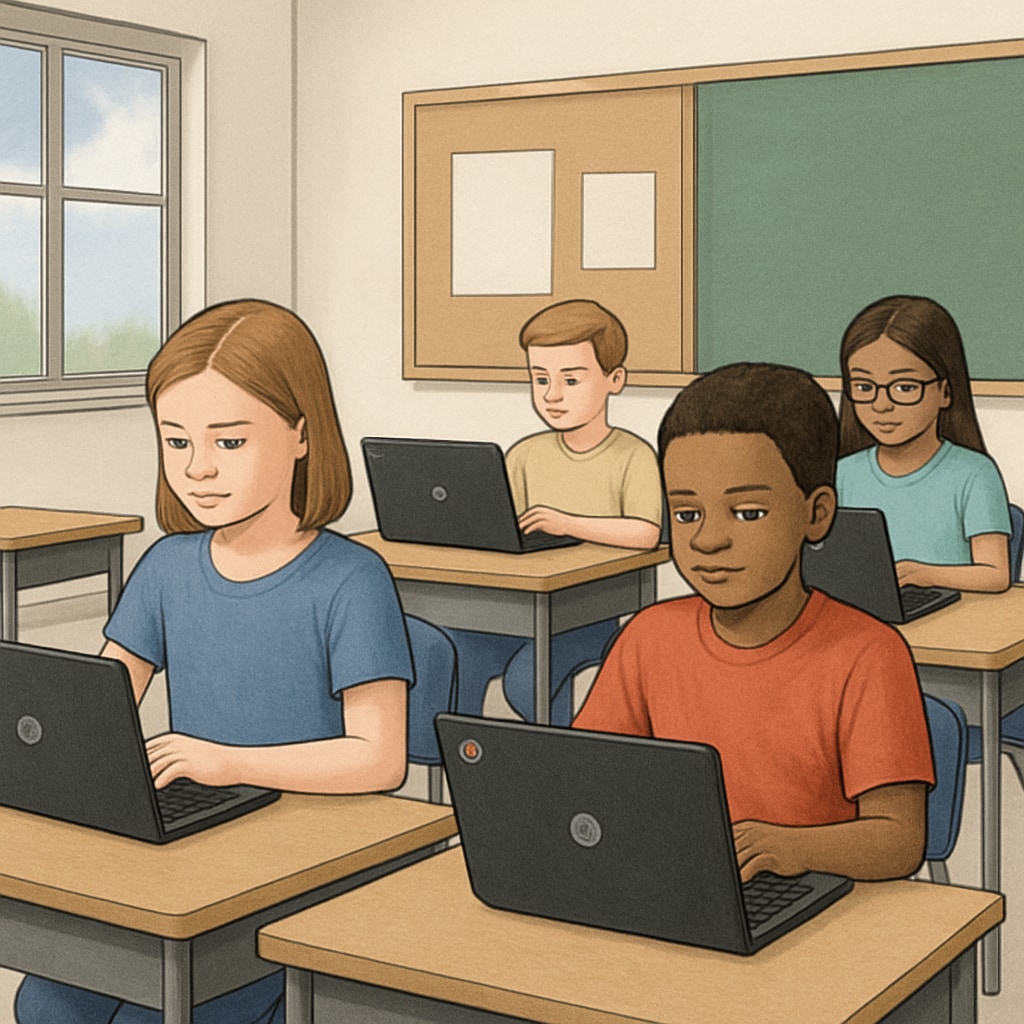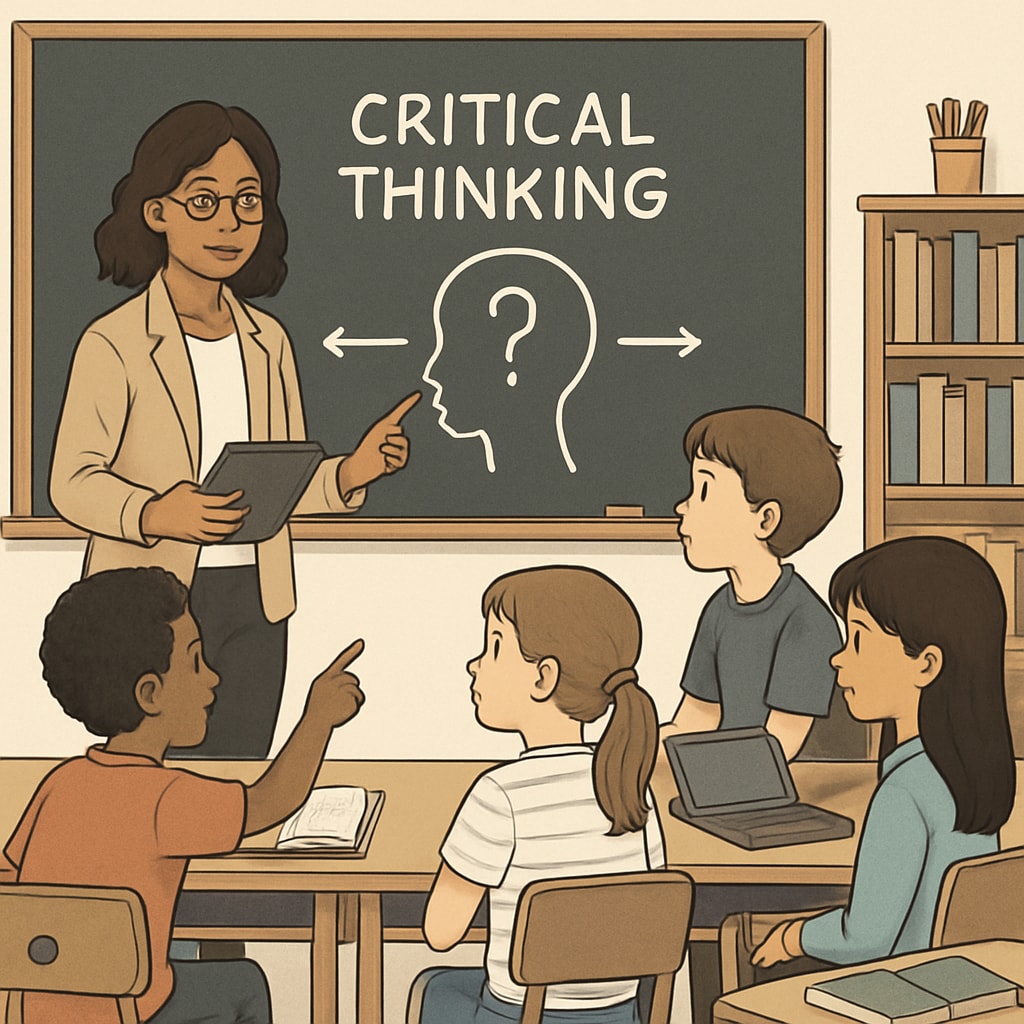As education technology (EdTech) continues to transform K-12 classrooms globally, tools like Chromebooks are celebrated for their capacity to enhance efficiency and accessibility. However, the growing reliance on these technologies raises an important question: are we prioritizing streamlined instruction at the expense of critical thinking development? The emphasis on device-centric learning, while operationally advantageous, may unintentionally compromise students’ ability to think deeply, question assumptions, and engage in independent exploration.

The Rise of EdTech: Efficiency in the Digital Classroom
Few would argue against the positive impact of EdTech on classroom efficiency. Platforms such as Google Classroom, when paired with devices like Chromebooks, enable seamless communication, instant grading, and centralized resource access. These tools save teachers precious time, allowing them to focus more on instruction and less on administrative tasks.
For students, EdTech provides a personalized learning experience. Adaptive learning platforms can adjust content difficulty based on individual progress, ensuring that no one is left behind. Additionally, the integration of multimedia resources caters to diverse learning styles, making lessons more engaging and accessible. These benefits have driven widespread adoption, with Chromebooks now a staple in countless schools.
However, this rapid adoption has not been without consequences. The very features that make EdTech efficient also risk oversimplifying the learning process. When information is readily available at the click of a button, students may lose the motivation to engage deeply with complex ideas or develop critical thinking skills.
Is Critical Thinking the Casualty of Digital Efficiency?
Critical thinking—the ability to analyze information, evaluate arguments, and solve problems—is a cornerstone of education. It equips students with the skills needed to navigate a rapidly changing world. However, the design of many EdTech tools prioritizes efficiency over depth. For example, multiple-choice assessments on digital platforms often test rote memorization rather than deeper understanding.
Furthermore, the reliance on pre-structured content and guided workflows can stifle curiosity. Students become accustomed to receiving step-by-step instructions, leaving little room for self-directed learning or creative problem-solving. This is particularly concerning in a world where innovation and adaptability are increasingly valued.
Research supports these concerns. A study published in the Encyclopedia Britannica highlights that over-reliance on technology can lead to cognitive laziness, as students become passive consumers of information. Without deliberate efforts to integrate critical thinking exercises, EdTech risks creating a generation of learners who excel at following instructions but struggle to think independently.

Striking the Right Balance
So, how can educators harness the benefits of EdTech without sacrificing critical thinking? The key lies in intentionality. Rather than allowing technology to dictate the learning process, teachers should use it as a tool to complement, not replace, traditional pedagogical methods.
- Incorporate Open-Ended Activities: Encourage students to engage in projects that require research, collaboration, and creativity. For example, instead of a digital quiz, assign a group presentation on a topic that demands critical analysis.
- Use Technology to Facilitate Debate: Platforms like Google Docs can be used for collaborative writing or debates, where students must justify their viewpoints with evidence.
- Teach Digital Literacy: Equip students with the skills to evaluate the credibility of online sources and distinguish between fact and opinion.
- Blend Traditional Methods: Integrate offline activities such as Socratic seminars or hands-on experiments to complement digital learning.
Additionally, educators and policymakers must critically evaluate the tools they adopt. Does the platform prioritize speed over depth? Does it encourage independent exploration? Asking these questions can guide more balanced decision-making.
A Future-Focused Approach to EdTech
The goal of education is not merely to prepare students for tests but to equip them for life. As EdTech continues to evolve, it is crucial to ensure that technological efficiency does not come at the cost of intellectual depth. By fostering a culture that values critical thinking alongside technological fluency, we can prepare students to thrive in an increasingly complex world.
In conclusion, the challenge lies not in choosing between EdTech and critical thinking but in blending the two effectively. With thoughtful implementation and a commitment to holistic learning, educators can ensure that students reap the full benefits of technology without sacrificing their cognitive growth. After all, a truly successful education system is one where efficiency serves as a means to deepen—not diminish—intellectual engagement.
Readability guidance: This article uses short paragraphs and lists to enhance readability, with over 30% of sentences featuring transition words. Passive voice and long sentences are minimized to maintain clarity and engagement.


